“The Road to Perdition” by Bob Wood
Please go here to access Mr. Woods’ and Angelina’s Uganda / Rwanda 2015 Summer Travel series.
The Bisesero Genocide Memorial is about 25 km from Kibuye (now Karongi) in the mountainous Lake Kivu district to the West. The 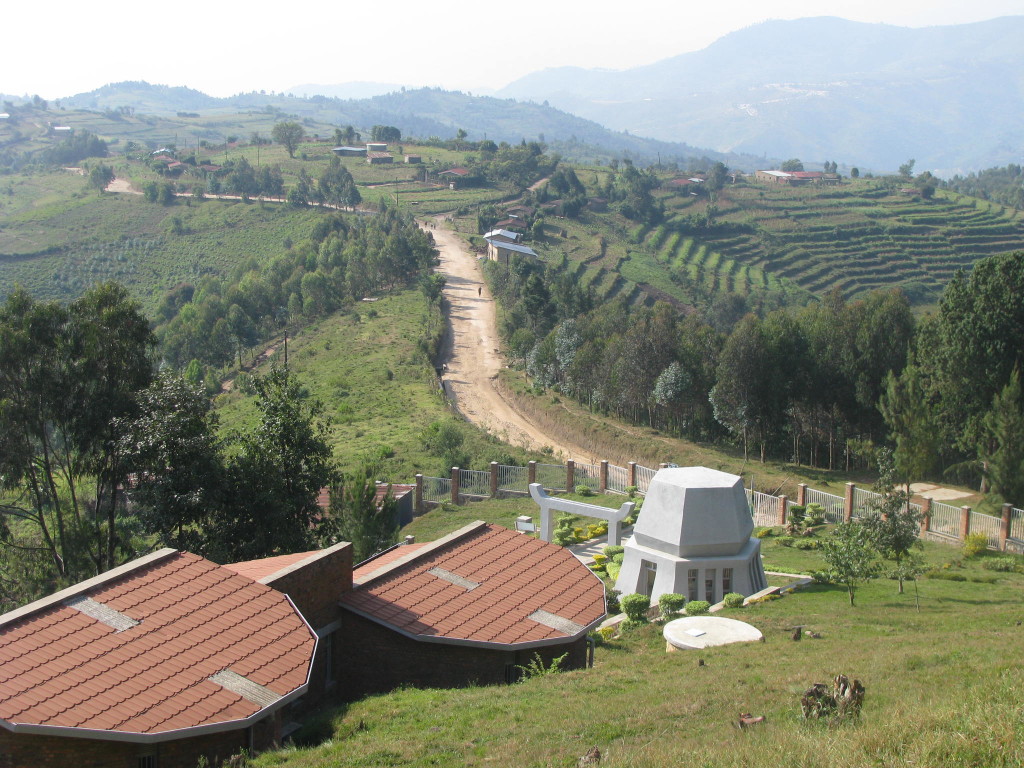 scenery is breathtaking; it rises and falls all about you as you ride the back of a taxi motorbike winding its way through the varying shades of green. Coffee, tea, matoke drape the hillsides and stuff the valleys. The modas we shared with our drivers – bounced and spun in the dry sand and dirt; I’m not sure if they’d even reach the place in the rainy months.
scenery is breathtaking; it rises and falls all about you as you ride the back of a taxi motorbike winding its way through the varying shades of green. Coffee, tea, matoke drape the hillsides and stuff the valleys. The modas we shared with our drivers – bounced and spun in the dry sand and dirt; I’m not sure if they’d even reach the place in the rainy months.
But the journey is a necessity if one is to contemplate the magnitude of systematic slaughter unleashed in 1994. Nearly 50,000 Tutsis were murdered here, amongst the pines and surrounding caves, making a final stand on the Hill of Resistance. All they had at the end were stones, sticks, and the high ground, which provided only enough cover for barely a thousand survivors to crawl away. Their story is dark. It’s compelling and horrible, and in many ways heroic. You must research the events before you visit. I had; still that did not prepare me for the ride to the Hill.
I was traveling with a friend who had her own driver spinning and bouncing through the sand – up, up, up, and then down and up again. All I could think of, the entire ride – is she feeling the same as I – does she realize that there is but one route to our destination? And we were on it. It was the same twenty years before. Perpetrators from all over Rwanda – they marched the same mountain road – machete in hand, up to butcher fellow citizens. It’s impossible to escape that overwhelming sense of what and who and how they came. Did they ride together in the back of trucks( Click here to know more about the truck )or did they come by foot? Did they sing? Did they chant? Was it joyous? Were they drunk? Or was it silent? Did anybody wonder, quietly or aloud, if what they were moving towards violated the laws of humanity, the will of God? Certainly anybody who wanted to kill a Tutsi in Spring of 1994 knew that there were scores hiding up in those hills. To traverse the very same route – particularly alone with your thoughts on the back of a motorbike – was surreal.
The Bisesero Genocide Memorial rises high in the sky, jutting out over the winding road and through the thick forest cover, apparent in the distance long before you reach it. The road that deposits you at the base actually divides the Hill of Resistance from the memorial itself. Each climbs a separate side of the road. When we arrived mid day, mid week, not a soul was insight…our drivers dropped us and planned on a three hour return…then sped off into the empty distance.
The layout of the memorial is plain. Three red-bricked, red-tiled roofed buildings, stark and simple, broken into three parts each – hop scotch up the side of a very steep hill. Each replicates the one before it. At the foot of the memorial is a small white concrete and modern looking visitors center – not much larger than a room. A concrete ramp about six-foot wide connects the four buildings in a zigzag trail. The back and forth is necessary because the memorial climbs the mountain, rising at a steep angle. There’s very few steps or railings to help you along the walk. If you are healthy – it’s doable – still you feel the strain. Without good legs, you won’t make it. The connecting concrete ramps continue through each of the three red bricked buildings; a straight line front to back door and on 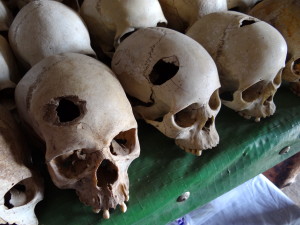 up the hill to the next. Inside, each of the three buildings is divided into three rooms, representing the nine Tutsi sectors in the surrounding Kibuye district. In each of the rooms laid out in ordered rows much like at Nyamata, gashed skulls and long bones, remains from the hill across the road, provide proof of the horror that went on here.
up the hill to the next. Inside, each of the three buildings is divided into three rooms, representing the nine Tutsi sectors in the surrounding Kibuye district. In each of the rooms laid out in ordered rows much like at Nyamata, gashed skulls and long bones, remains from the hill across the road, provide proof of the horror that went on here.
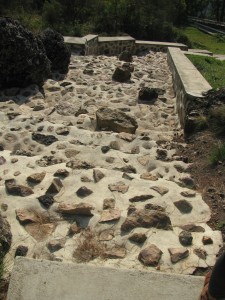 Embedded into the final ramp football-sized rocks are scattered about, and further hinder the assent to the top, where nearly 50,000 are entombed. This memorial is not made to be handicapped accessible. It is about you knowing that you are struggling up a mountain with a single goal in mind…as perpetrators did back in 1994.
Embedded into the final ramp football-sized rocks are scattered about, and further hinder the assent to the top, where nearly 50,000 are entombed. This memorial is not made to be handicapped accessible. It is about you knowing that you are struggling up a mountain with a single goal in mind…as perpetrators did back in 1994.
Off of the motorbikes and inside of the gate, we found our guide…a tiny Rwandan in her thirties. She introduced herself in French; we knew none. She had a nice smile and a soft way. She led us up the incline to the first stop. Along the way, she asked us more than once “Francais?” She had so much to she wanted to tell us. Back in 1994 she was thirteen – she was there – actually she was across the road up the hill that was staring back at us – the Hill of Resistance. With no common means of language; she willed us the basics. Eleven family members – nine brothers and sisters, her mother and her father were murdered on the hill. Somehow the thirteen-year old girl survived but there was none to hire fathers rights attorneys . Now, she was with us – and she shared her story – we tried but we just couldn’t understand.
She improvised. Stones got thrown down the hill – she picked them up and threw them; we understood. Skulls stacked neatly in the three 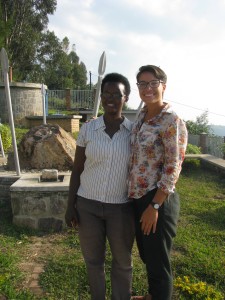 rooms – alongside long bones of the arm and leg – featured bullet holes, machete slashes, and orange stains from the burnings – she noted the fractures. We empathized. Patiently, she took us to the summit and reminded us again, that the Hill of Resistance lie across the road – and that is where her family died. She pointed.
rooms – alongside long bones of the arm and leg – featured bullet holes, machete slashes, and orange stains from the burnings – she noted the fractures. We empathized. Patiently, she took us to the summit and reminded us again, that the Hill of Resistance lie across the road – and that is where her family died. She pointed.
After allowing us to linger at the peak – where 50,000 victims lie entombed – she walked us back down – every so often asking if we maybe knew just a little French. Back at the visitors center she showed us the visitors log where the few who had found Bisesero, probably on the back of their own mods taxi, revealed their thoughts. I paged through the few names from the previous month (unfortunately not many make the trek)…and landed on an entry from Paris written in English –
“Ashamed to be French.”
I found out upon returning from Bisesero just why. In June French troops arrived on the mountain. They coaxed Tutsi defenders out of hiding, and then for some reason they left, and Hutu militia finished up their work on the stumbling and starving survivors. Three days later French troops returned to clean up. It’s not exactly known how many more Tutsis were murdered in those final three days – or if our guides’ brothers and sisters or mother and father were among the last to perish. It was enough, however, to shame the French traveler. And it seems pretty symbolic of Western apathy and complicity in the entire Rwandan genocide.
The memorial is distressing, the ride there extraordinary. The events on the hill across the road are necessary if you intend to comprehend the brutality and the cruelty and fanatical obsession to kill that infected the beautiful green rolling hills of Kivu in April, May, and June of 1994
photography is not allowed in the rooms of skulls – I copied that photo from Internet

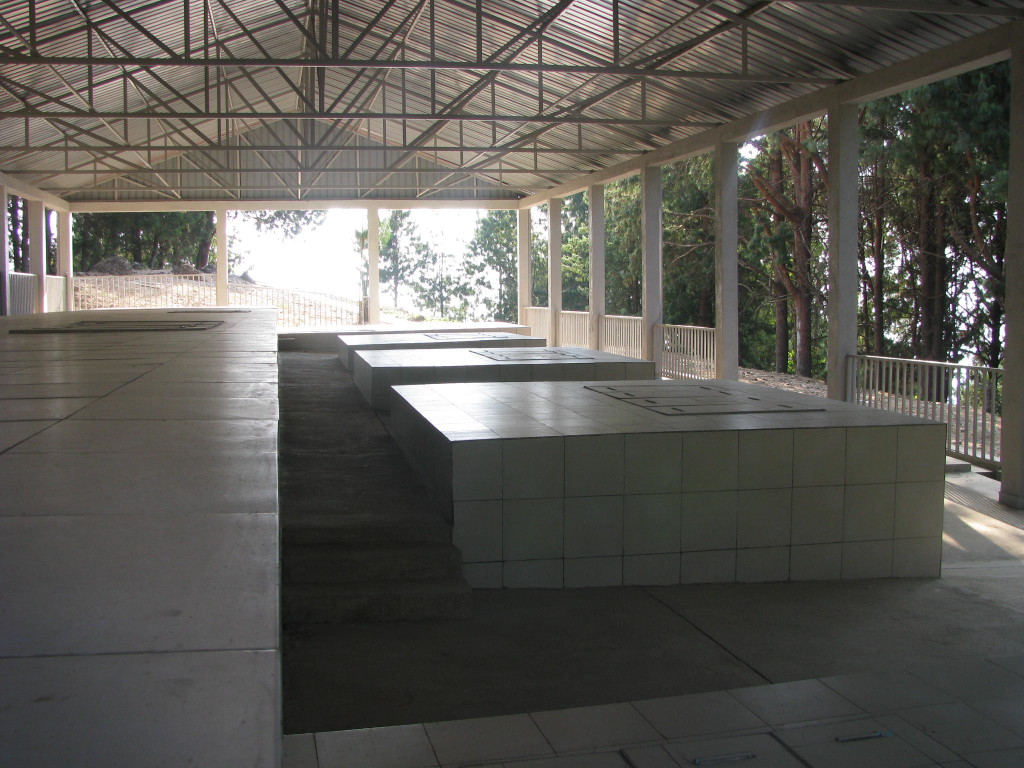
















































































































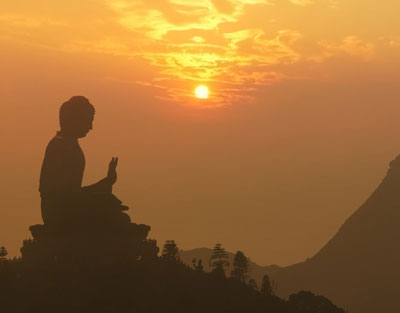
Speechless and unthinkable …. thanks for sharing through words.
Compelling and beautifully written, thank you.
What a nice thing to say…thanks:)
I hadn’t had time to read the stories until today (the Sunday before Labor Day).
What took me so long? Great story Bob. Thanks for sharing. Maybe I will read this again in a book someday.
Mr Wood you have given a very pictures view of mans cruelty to men
Its very hard to imagine. Thankyou. Ronald Pesch